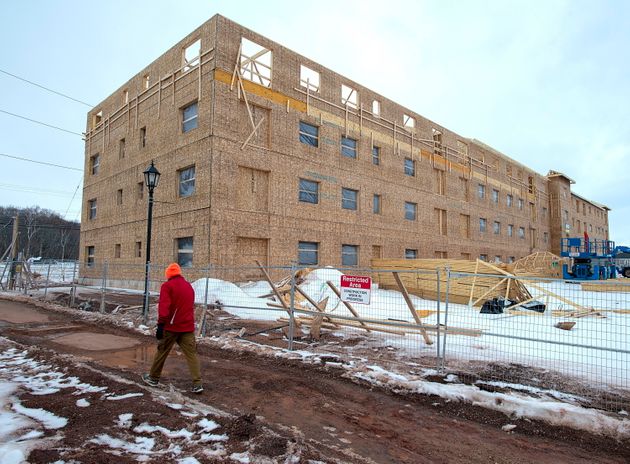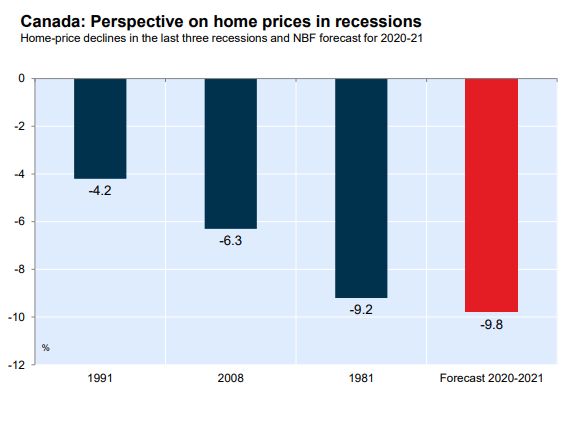
Is the golden age of high-rise condos behind us?
Statistics Canada thinks that might be the case. The agency put out two reports this week in which it predicted that the shift to working from home, and the bust-out of short-term rentals amid the pandemic, will depress demand for condos in the longer run.
“As working from home becomes more prevalent, we may see an increase in the demand for larger living spaces that single-family homes can offer, causing a shift in demand from condominium apartments towards single houses,” StatCan said in a rare bit of crystal ball-gazing this week.
“Builders may start catering to buyers’ preferences by offering additional office space in the design of their new homes to accommodate remote working arrangements.”
Watch: Some families leaving big cities after coronavirus pandemic. Story continues below.
In an outlook published this week, the agency predicted that in the country’s three largest housing markets ― Toronto, Montreal and Vancouver ― condos will come under pressure.
“Prior to the pandemic, Toronto was experiencing an exodus of middle class families to surrounding cities. This population outflow was previously overshadowed by immigration which has now decreased due to the impacts of the pandemic. This will likely also drive down the price of condominiums in the medium to long term,” the agency said.
“Similarly to Toronto, Vancouver has a potential of short term rentals flooding the market and thus causing a decline in condominium prices in the short to medium term.”
Recent data from real estate groups is pointing in the same direction.
An analysis from real estate portal Zoocasa found that in June there was a 257-per-cent spike in available condo rentals in Toronto buildings known to be “Airbnb-friendly.” That compares to an 83-per-cent increase, versus a year ago, in available rentals in the city as a whole.
“A significantly slower tourism industry is forcing many short-term rental investors to consider recalibrating their income strategy to either seek long-term tenants or consider offloading their investment entirely,” Zoocasa’s head of communications, Jannine Rane, wrote on the portal’s blog.
Meanwhile, a large share of homebuyers is looking to purchase on the edges of the city, or outside the city altogether, a phenomenon that seems to be happening in cities around the world, including in New York, London and the San Francisco Bay Area. As with Toronto, in many cases, it’s an acceleration of existing trends.
In a recent Nanos poll for the Ontario Real Estate Association, 60 per cent of respondents said they found rural living more appealing than before the pandemic.
Exodus to cottage country
Near Greater Toronto, real estate agents are reporting a “full-on frenzy” in the Muskoka cottage-country region north of the city. Home sales were up 30 per cent in June at the real estate board that covers the area, compared to the same month a year earlier.
“This is the highest demand we’ve seen for waterfront properties on record, with sales activity bouncing from recent lows to hit the largest sales record for any month in history,” Lakelands Association of Realtors president Catharine Inniss said in a statement.
And while Toronto’s real estate board cheerily reported a rebound in sales and a nearly 12-per-cent increase in the average selling price in June, the condo market there is showing signs of softening.
Condo sales were 16.3 per cent lower in June than a year earlier, while detached home sales were up 5.6 per cent.
The MLS home price index shows condo prices have fallen or stopped growing in the past few months in Toronto, Montreal and Vancouver.
In a recent report, Toronto real estate agent Doug Vukasovic noted that the very high prices in city cores are also driving people to look further outside the city.
“But bang for your buck may no longer be telling the whole story,” Vukasovic wrote. “Anticipating a post-pandemic ‘new normal’ of more flexible work and commuting arrangements, could buyers be prioritizing a bit more space ― and even a bit of backyard ― over being in the midst of the action downtown?
“Time will tell if this trend continues and Toronto’s suburbs continue their growing appeal.”
















